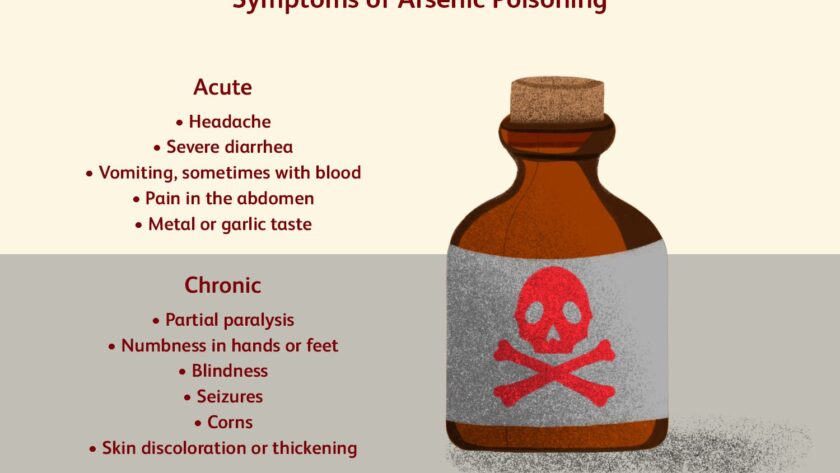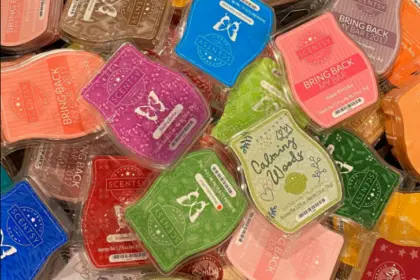Arsenic is a dangerous heavy metal that can have severe health consequences when consumed in high quantities over long periods of time. While naturally present in air, soil and water, it can make its way into our food supply through absorption by crops, contamination during processing, or preparation methods.
Chronic exposure to elevated levels of arsenic has been definitively linked to cancer, cardiovascular disease, neurotoxicity and diabetes. A recent study that tested arsenic concentrations in a range of commonly eaten foods uncovered alarming results – several popular food items that many of us eat regularly were found to contain high amounts of inorganic arsenic, the most toxic form.
The foods found to have the highest arsenic levels included rice, fruit juices, baby foods, chicken, wine, seafood and even some breakfast cereals. Rice had some of the highest observed levels out of all the foods tested, as arsenic is easily taken up by rice plants due to their aquatic origins. Grape and apple juice also contained high arsenic, with levels in some cases exceeding federal drinking water standards. Meats like chicken were another key source due to the use of arsenic-based animal drugs.
With arsenic exposure coming from so many dietary sources, there are concerns that regular consumption of contaminated items may put consumers at risk over their lifetimes. Science shows that accumulating low or moderate doses of arsenic over long periods can initiate the development of chronic diseases like heart disease, diabetes or cancer. Those who eat large amounts of contaminated items on a regular basis face the highest risks.
In this article, we will analyze the new research and results in greater detail, discuss how arsenic enters our food system, highlight at-risk populations and give recommendations for consumers to limit exposure. Being aware of the arsenic content in foods and making informed dietary choices is key to reducing your risks and avoiding potential toxicity.
The Alarming Research
A comprehensive study conducted by the respected consumer advocacy group Consumer Reports analyzed concentrations of total and inorganic arsenic in over 80 different food samples. This included various types of rice and rice products, fruit juices, pre-packaged baby foods, chicken and other commonly consumed items.
Testing revealed that many of these popular dietary staples contained potentially dangerous levels of arsenic, especially in its most toxic inorganic form. Levels in some fruit juices exceeded federal limits for arsenic in drinking water by up to 65%. Rice had the highest measured arsenic amounts of any food tested, with some samples containing over 230% more inorganic arsenic than the legal water limit.
These results are extremely concerning, as accumulating exposure to inorganic arsenic over months and years is known to substantially raise risks of developing chronic health conditions. The decades-long Latrobe Valley Health Study definitively linked arsenic ingestion to increased lung and bladder cancer rates. Other research has connected high arsenic intake to elevated risks for cardiovascular disease, neurotoxicity in developing children, and conditions like diabetes.
With many common foods testing high, the regular consumption of contaminated items is likely increasing the public’s toxic arsenic exposure and imperceptibly endangering health over time.
Top 9 Foods Containing Arsenic
Arsenic makes its way into agricultural and other food sources through both natural and artificial processes. Trace levels of arsenic are found nearly everywhere in soils and water systems due to natural mineral deposits and anthropogenic pollution.
Rice, having aquatic origins, is particularly susceptible to absorbing higher arsenic as it grows. Uptake varies based on environmental conditions like soil composition, fertilizer use, irrigation water purity and more.
In addition, the direct application of arsenic-containing pesticides, herbicides, growth promoters and fertilizers onto agricultural lands can further contaminate soils, irrigation water and crops.
Rice fields are often directly treated with arsenical pesticides. Poultry can ingest arsenic through feed containing roxarsone, an arsenic-based drug historically used to combat parasites and improve feed efficiency.
Wine and fruit juices are also at risk of contamination as arsenic taken up by grape vines and fruit trees becomes concentrated through juicing, evaporation and other processing steps. Use of arsenic-treated lumber in food handling and storage facilities is yet another potential avenue of introduction.
For babies, Consumer Reports found that sweet potato and juice concentrates were amongst the ingredients containing the highest observed arsenic concentrations in packaged infant and toddler foods. Developing children are especially vulnerable.
Top 9 Popular Foods That Tested Positive For High Levels Of Arsenic
- Rice
- Fruit juices – apple, grape
- Baby foods
- Chicken
- Wine
- Seafood
- Sweet potatoes
- Breakfast cereals
- Rice-based snacks
Populations Facing the Highest Risks
Infants and young children face the greatest risks from dietary arsenic exposure, as their diets regularly consist of items like rice, fruit juice and pre-packaged foods made with contaminated ingredients.
Arsenic early in life is particularly dangerous, as it can impair brain development and cognition. Childhood exposure has also been connected to increased respiratory tract infections and diarrheal disease mortality.
Other high-risk subsets of the population include certain ethnic groups consuming large amounts of contaminated items, those living near EPA Superfund sites or other industrial operations where arsenic contamination occurs, people with celiac disease or gluten intolerance who consume more rice products due to dietary restrictions, and those who regularly eat seafood in which arsenic bioaccumulants.
Recommendations To Reduce Heavy Metal Exposure
While arsenic exposure from food is generally low for most people, the following consumer recommendations can help limit risks:
Consider A Heavy Metal Detox Using All Natural:
- Micro Ingredients Milk Thistle Powder (150 milligrams taken 2x daily, or milk thistle tea 1-3 times daily) — This is one of the most popular herbs for detoxifying the liver. Silybin is a component with the greatest degree of biological activity that has strong antioxidant properties. It may act as a toxin blockade agent by inhibiting binding of toxins to cell membrane receptors. Silymarin has been shown to reduce liver injury and is used to treat alcoholic liver disease, acute and chronic viral hepatitis and toxin-induced liver diseases.
- Micro Ingredients Chlorella Tablets (1-4 grams per day, or about 4-8 caps daily) — Chlorella is a type of green algae that acts as a natural chelator to remove heavy metals, especially lead and mercury. It’s a great source of chlorophyll and is “hungry” to absorb other metals. You can take it in powder or tablet form.
- Vary grains beyond just rice; incorporate oats, quinoa, barley, wheat and others
- Limit juice portion sizes for children; dilute juices with water
- Use bottled water low in arsenic for cooking and preparing foods
- Introduce variety into children’s diets including fruits, vegetables, lean proteins and dairy
- Rinse rice thoroughly before cooking and use excess water
- Follow updated cooking guidelines to optimize rice preparation
- Check latest food testing data to avoid highly contaminated products
- Be aware of potential arsenic in poultry, grape products, seafood and more
- Consider preparing homemade baby foods or purchasing from brands that rigorously limit arsenic
The recent research revealing alarmingly high levels of arsenic in many common foods raises important health concerns. Arsenic exposure through contaminated dietary staples could be quietly increasing risks for serious diseases over time for millions of consumers.
While more studies are needed to quantify the public health impacts, the results suggest that more proactive policies, responsible practices by food companies, and informed choices by consumers are necessary to reduce arsenic hazards in the food supply. Regulators may need to set stricter limits for contaminants in juices, rice-based foods and other at-risk categories.
Companies should source from farmers using responsible agricultural practices and carefully monitor ingredients. Consumers also play a key role by educating themselves, varying their diets, and taking appropriate precautions around rice, juice and food preparation.
Although arsenic occurs naturally to some degree, there are clearly steps that can be taken at every level to minimize unnecessary exposure and keep levels as low as reasonably possible. Each of us makes choices daily that can reduce risks to our health and that of our families. With this new data in hand, we have an opportunity to make progress against this hidden threat.





